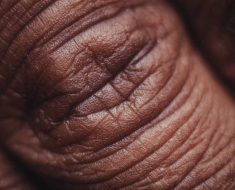Blockages damage the lungs and cause their airways to narrow. This damage leads to difficulty breathing.
In this article, we look at the causes, symptoms, diagnosis, and treatment of several types of obstructive lung disease.
What is obstructive lung disease?

When a person breathes, air travels down the windpipe through a series of tubes called bronchi, which gradually get smaller. At the end of these tubes are bunches of air sacs called alveoli.
In healthy lungs, the alveoli fill up with air and pass oxygen through to the blood vessels that run along them. At the same time, the blood passes carbon dioxide back to the alveoli for exhalation.
In obstructive lung disease, less air flows in and out of the alveoli and fewer gas exchanges can happen. This can happen for many reasons, depending on which type of obstructive lung disease a person has.
Types of obstructive lung disease include:
- chronic obstructive pulmonary disease (COPD)
- emphysema
- asthma
- cystic fibrosis
Obstructive vs. restrictive lung disease
While many of the symptoms of obstructive lung disease and restrictive lung disease are similar, the causes of the symptoms differ.
When a person has obstructive lung disease, something prevents air from flowing as freely in and out of the airways.
Common factors that obstruct airflow include:
- swelling and inflammation in the airways
- thick mucus in the airways
- damage to the walls of the air sacs
In restrictive lung diseases, a person cannot fully fill their lungs because the lungs are restricted. Conditions that cause stiffness in the lungs or the muscles around the lungs cause restrictive lung disease.
Conditions that cause restrictive lung disease include:
- obesity
- scoliosis
- muscular dystrophy
- interstitial lung disease
- sarcoidosis
- neuromuscular disease, such as amyotrophic lateral sclerosis
- pulmonary fibrosis
- asbestosis
- silicosis

Shortness of breath is the main symptom of obstructive lung disease. At first, this may only occur with physical activity. However, as the disease progresses, it can occur at any time, including when a person is resting.
Other symptoms of obstructive lung disease include:
- wheezing
- tightness in the chest
- a chronic cough that may produce mucus
- a feeling of mucus in the back of the throat, especially first thing in the morning
- a loss of energy
- weight loss
- a blue tint to the lips or nail beds
- repeated respiratory infections
- swelling in the legs and feet
Symptoms and their severity will vary from person to person depending on how much the disease has advanced. They may also vary based on the specific condition that is responsible for the obstructive lung disease.

Treatment for obstructive lung disease typically involves opening the airways.
Obstructive lung disease causes bronchospasms, which are spasms of the smooth muscles in the walls of the airways.
There are several medications available to treat these spasms that fall under the category of bronchodilators.
Examples of bronchodilators include:
- combined medications, such as Combivent Respimat
- formoterol (Foradil), which people use in combination with an inhaled corticosteroid
- tiotropium (Spiriva)
- albuterol (Proventil HFA, Ventolin HFA, AccuNeb, ProAir HFA)
- salmeterol (Serevent), which people use in combination with an inhaled corticosteroid
- ipratropium (Atrovent)
Since obstructive lung disease can also cause inflammation, there are medications that a doctor may prescribe to help treat the inflammation. Some examples include:
- Singulair (montelukast)
- Qvar (inhaled corticosteroid)
- Prednisone (oral corticosteroids)
- Flovent (inhaled corticosteroid)
- Advair (combination inhaled corticosteroid and long-acting bronchodilator)
In some severe cases, a person may require a lung transplant. Other people may need oxygen therapy.
Prevention
Preventing obstructive lung disease is similar to preventing other lung infections. There are some precautionary steps that a person can take, including:
- quitting smoking
- avoiding secondhand smoke
- exercising regularly
- taking precautions around chemicals and fumes
Outlook
The outlook for a person with obstructive lung disease varies based on what kind of obstructive lung disease they have and, for some types of obstructive lung disease, how severe it is.
A study paper that appeared in the International Journal of Chronic Obstructive Pulmonary Disease suggests that the more advanced a person’s COPD is, the lower their life expectancy may be.
A person with cystic fibrosis also has a reduced life expectancy, but this has increased with modern medicine.
For a person with an obstructive lung disease to live as long and healthily as possible, it is crucial that they follow their doctor’s care plan and follow a healthful lifestyle.
Source: Read Full Article





